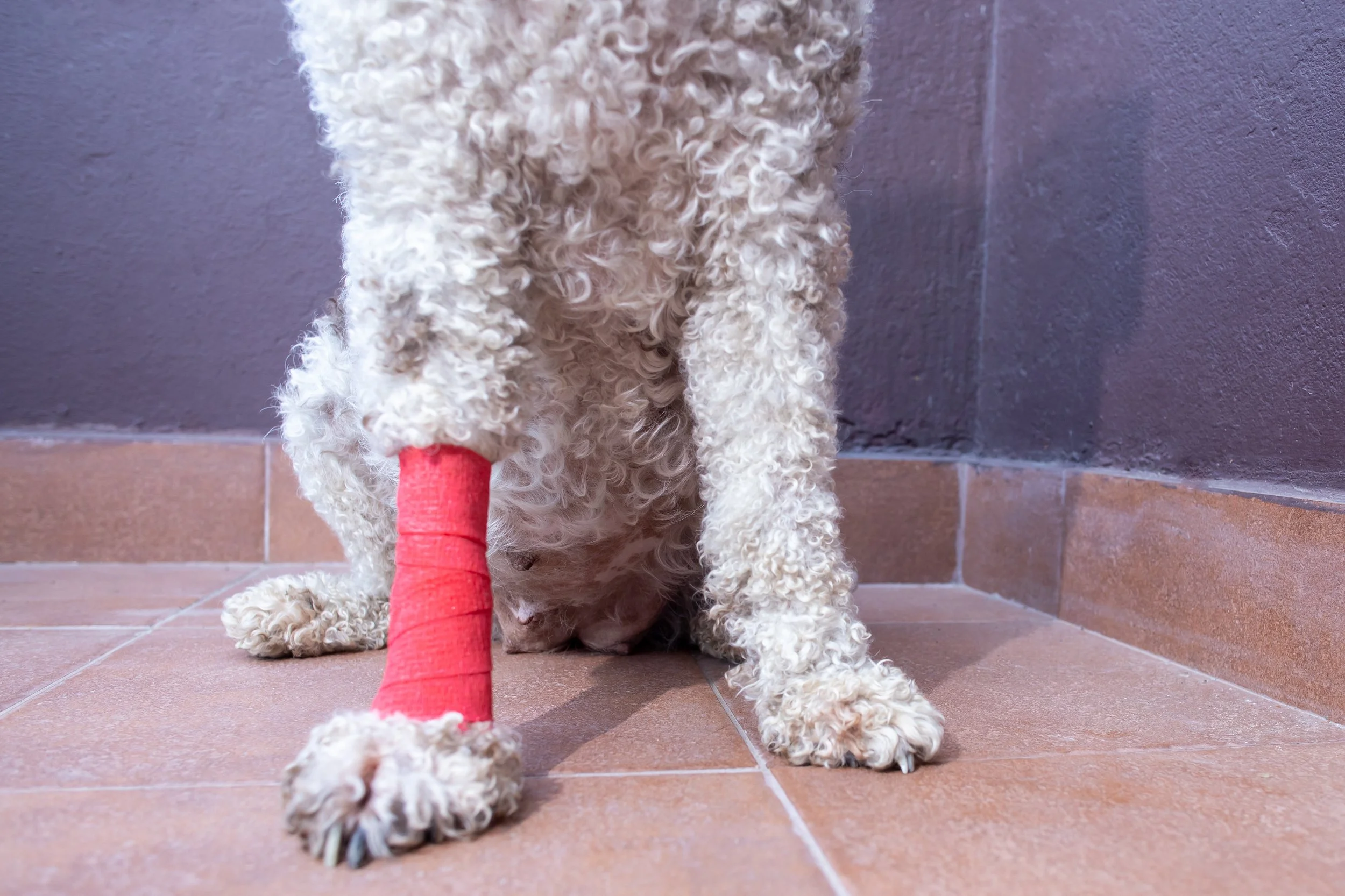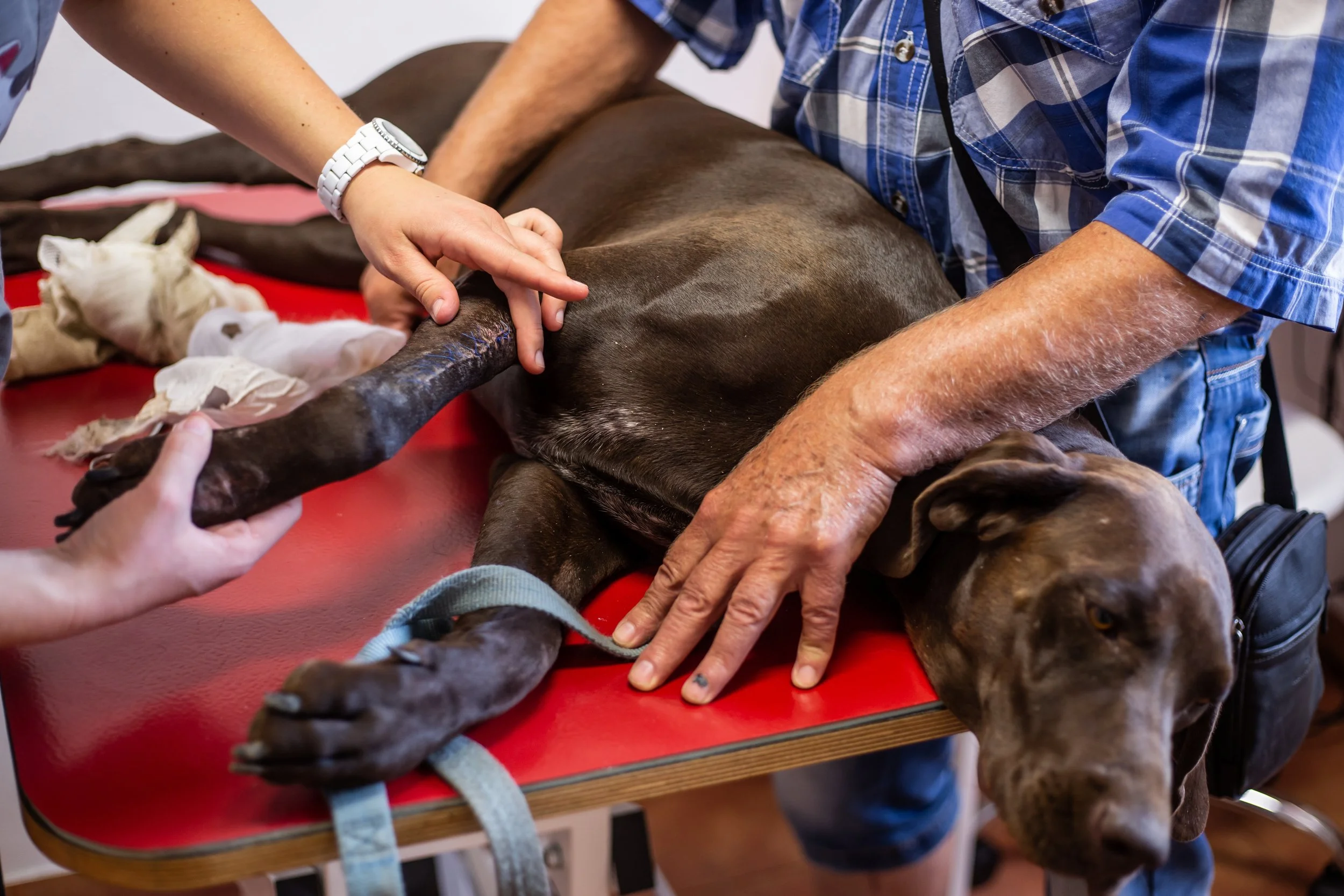How to Tell if Your Dog Has a Broken Bone (Fracture)
How to Tell if Your Dog Has a Bone Fracture
Our furry friends aren’t always the most cautious when it comes to protecting themselves. If you own a dog that likes to rough house, jump off things or practice the parkour - recognizing the signs of a broken bone (fracture) is important. Whether it's from an accident, a fall, or rough play, fractures in dogs can be a serious condition requiring immediate attention. Here's how to identify if your dog may have a fracture and what steps you should take.
Signs and Symptoms of a Fractures in Dogs
While there are obvious signs of a broken bone in dogs, some will try and hide it. Research has shown that some dogs hide being sick or injured, an instinct that was most likely passed down from being pack animals, afraid of being left behind if they can’t keep up with their family members. Luckily, you can show them you’re there to help. Here are some signs of broken bones in dogs to look out for:
Limping or Lameness
One of the most obvious signs of a dog having a broken leg, is limping or refusal to put weight on a limb. If your dog is suddenly favoring one leg or not using it at all, this could indicate a fracture.
Swelling and Inflammation
Swelling around the injured area is common in fractures. The affected limb or body part may appear noticeably larger than usual due to inflammation, which is the body’s natural response to injury.
Pain and Sensitivity
Your dog may exhibit signs of pain when the injured area is touched. This could include whining, growling, or snapping when the area is handled. Dogs in pain might also be more withdrawn or irritable than usual.
Visible Deformity
In some cases, a broken bone can cause a visible deformity. The limb might appear bent, twisted, or in an unnatural position. This is more likely in severe fractures where the bone is displaced.
Bruising or Bleeding
Depending on the nature of the injury, you might notice bruising around the affected area. If the fracture is severe, it might even result in an open wound with visible bone fragments, although this is less common.
Change in Behavior
A broken bone for a dog may also elicit some unusual behavior, such as decreased activity, reluctance to move, or a loss of appetite. These can be signs that your dog is in pain and is trying to cope with the injury.
What to Do If You Suspect Your Dog Has a Bone Fracture
Stay Calm and Assess the Situation
It’s important to stay calm, as your dog will likely be stressed and in pain. Assess the situation carefully to determine if there are any other injuries or immediate dangers that need to be addressed.
Minimize Movement
Try to keep your dog as still as possible to avoid worsening the injury or your dog’s possible broken leg. If you need to move your dog, do so gently and support the injured area to prevent further damage.
Seek Immediate Veterinary Care
A dog with a broken bone is a medical emergency. Contact your veterinarian immediately or take your dog to an emergency animal hospital. The vet will likely perform X-rays to confirm the fracture and determine the best course of treatment.
Provide Comfort
While waiting for veterinary care, keep your dog comfortable. Offer reassurance through gentle petting and calm words. Avoid giving any pain medication without consulting your vet, as some human medications can be toxic to dogs.
Getting your companion care for less
If you’re having trouble getting an appointment at your U.S. based vet, contact MexiVet Express. We typically have appointments available the next day and you can save big on your bill versus going to a vet in the U.S. For example: x-rays in the U.S are typically well over $400, while in Tijuana you’ll pay around $50. We’ll also get you a quote before you go so you can plan accordingly.










